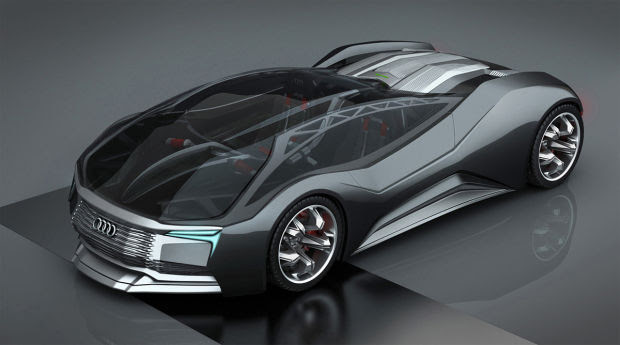The AUDI Mesarthim F-Tron Quattro concept car was inspired in part by Michel Laberge.
The electrically powered vehicle is currently favoured to replace the classic thermal vehicles. But with the democratization and mass production of these new vehicles, more and more voices are being raised to point out the polluting aspects of electric cars.
These vehicles are considered clean because they do not emit greenhouse gases or emit much less, if they are hybrids, and the criticisms concern the production of the cars, the batteries and the energy sources used to run them.
Depending on the use of the vehicle, particularly the number of kilometers driven per year, the electric car is not necessarily the most ecological vehicle compared to a hybrid car, a car with a small battery that can be recharged by the combustion engine, or to a rechargeable hybrid car, a car with a medium-sized battery that can be recharged from the electrical grid.
In a study on the United States, the American Council for an Energy Efficient Economy had identified in 2019 the cleanest vehicles taking into account a production of electricity from 28% of coal and among the first 12 vehicles, only 3 were completely electric vehicles.
Based on various studies, including one by the Swedisch Environmental Research Institute in 2017, which estimates that it is necessary to spend about 10 tons of greenhouse gases to produce a 60 kWh battery, it is possible to compare this pollution with that emitted by a conventional thermal vehicle, such as a Honda Civic for example.
This vehicle will emit the same amount of greenhouse gases, i.e. 10 tons, when it drives a minimum of 60,000 kmn. Thus, depending on the dominant origin of the source of electricity used, coal, gas, hydroelectricity or nuclear, a rechargeable vehicle may have a better environmental performance than an electric vehicle if it travels less than 15,000 km per year.
The electric vehicle will be more ecological over long distances and if the vehicle is kept for more than 5 years, even if the origin of the electricity produced will also influence its performance. For a region like Quebec, which produces most of its electricity from hydroelectric power, the ecological advantage of the electric vehicle will be real, but it will be less obvious for Alberta, for example, which uses mostly coal to produce electricity. In this case, the electric vehicle, depending on the distance traveled annually and the length of time it is owned, may still be more polluting than a thermal vehicle.
The ecological advantage is even less obvious if the electric vehicle is a back-up vehicle to a thermal vehicle and not a replacement vehicle, as is the case for 42% of American households according to a study published in 2017.
https://www.lapresse.ca/debats/opinions/2020-02-24/la-voiture-la-plus-verte-n-est-pas-toujours-celle-qu-on-pense
In this context of decreasing greenhouse gas emissions, technology is coming to the rescue of the climate to offer vehicle solutions that reduce these emissions.
In addition to traditional thermal and electric vehicles, some manufacturers are looking at using nuclear energy to power vehicles. One of the possibilities currently being studied is the use of thorium as a fuel. This material is the densest known, and 8 grams would allow a car to travel for 100 years.
A Connecticut-based company, Laser Power System, has begun to develop engines the same size as a combustion car engine using thorium as fuel. According to the CEO of LPS, 1 gram of thorium can provide as much energy as 7,396 gallons of gasoline, about 33,600 litres.
In terms of energy, thorium is less reactive than uranium, and since it is not fissile, it cannot cause nuclear reactions as uranium can. However, thorium is still a radioactive element, even if it is less so than uranium, and it produces a large amount of heat, which can be dangerous for both the occupants and the car.
Another alternative could be to use thorium not as a fuel but as an energy source to power batteries. This would be the role of the liquid thorium fluoride reactor, the LFTR, which can produce energy from thorium.
Unlike a uranium nuclear reactor, the LFTR uses liquid fuel, does not emit radioactive water vapour, consumes 99% of its fuel compared to 1% in the traditional reactor and cannot melt since it is already composed of molten salt used as a coolant. The waste from this reactor is of the order of 1% and remains radioactive for about 300 years compared to 10,000 years for uranium.
https://www.tech-connect.info/technologies/le-moteur-automobile-du-futur-serait-base-de-thorium/3161/
The use of radioactive material to power transportation devices, whether spacecraft or cars, if technically feasible, is however confronted with other considerations that may be more difficult to overcome.



Comment here